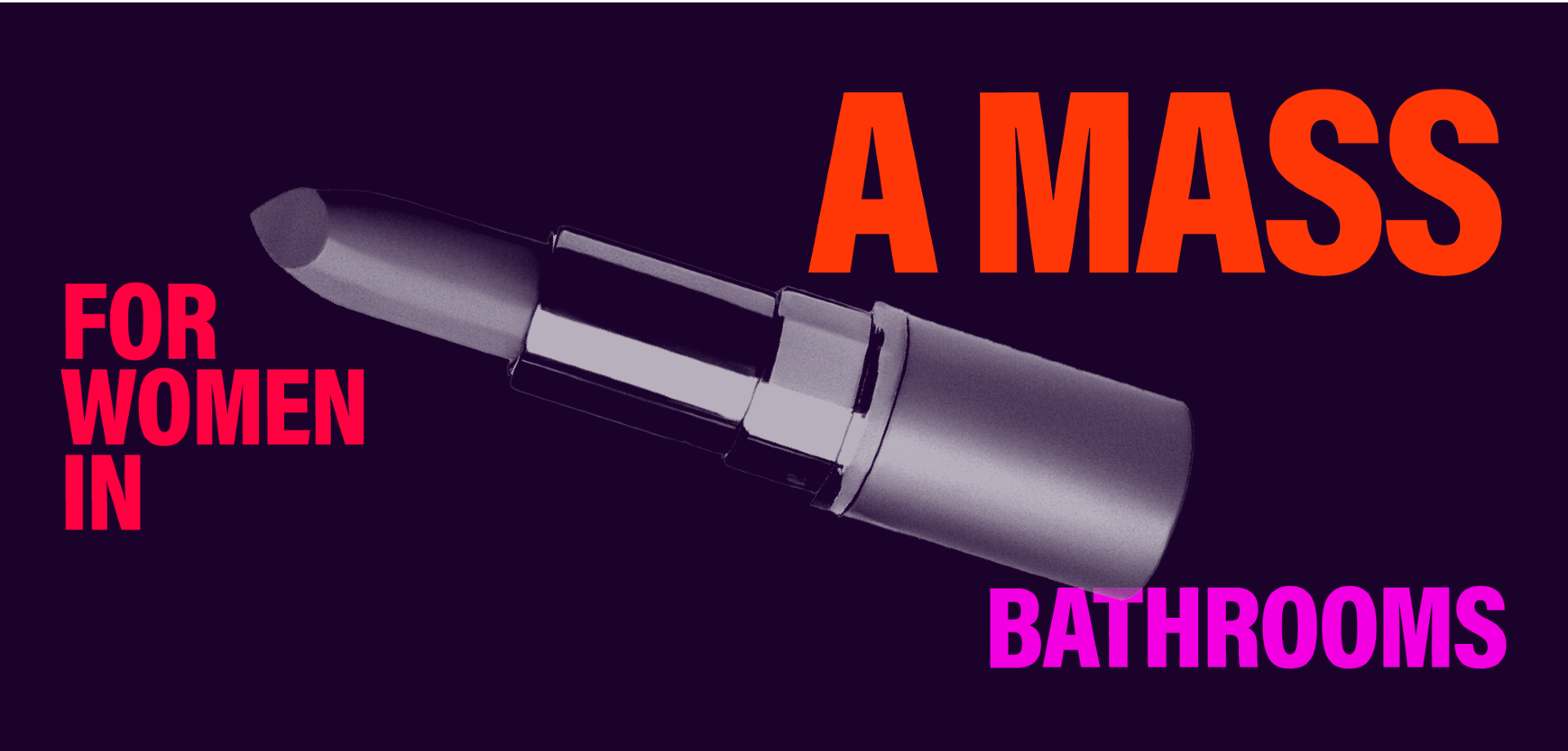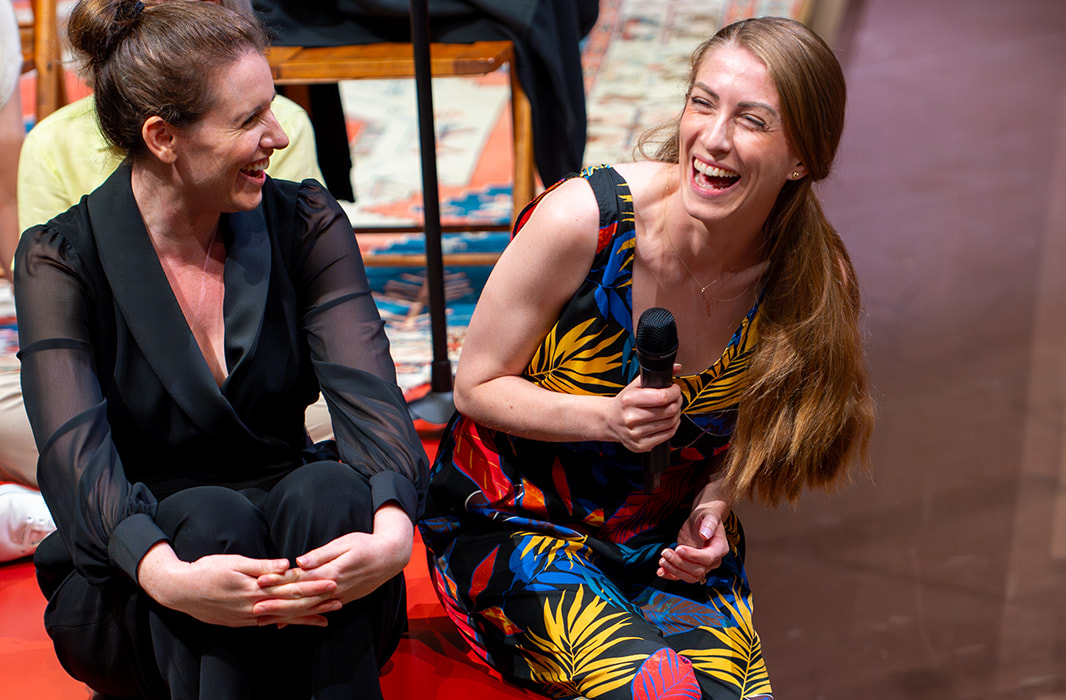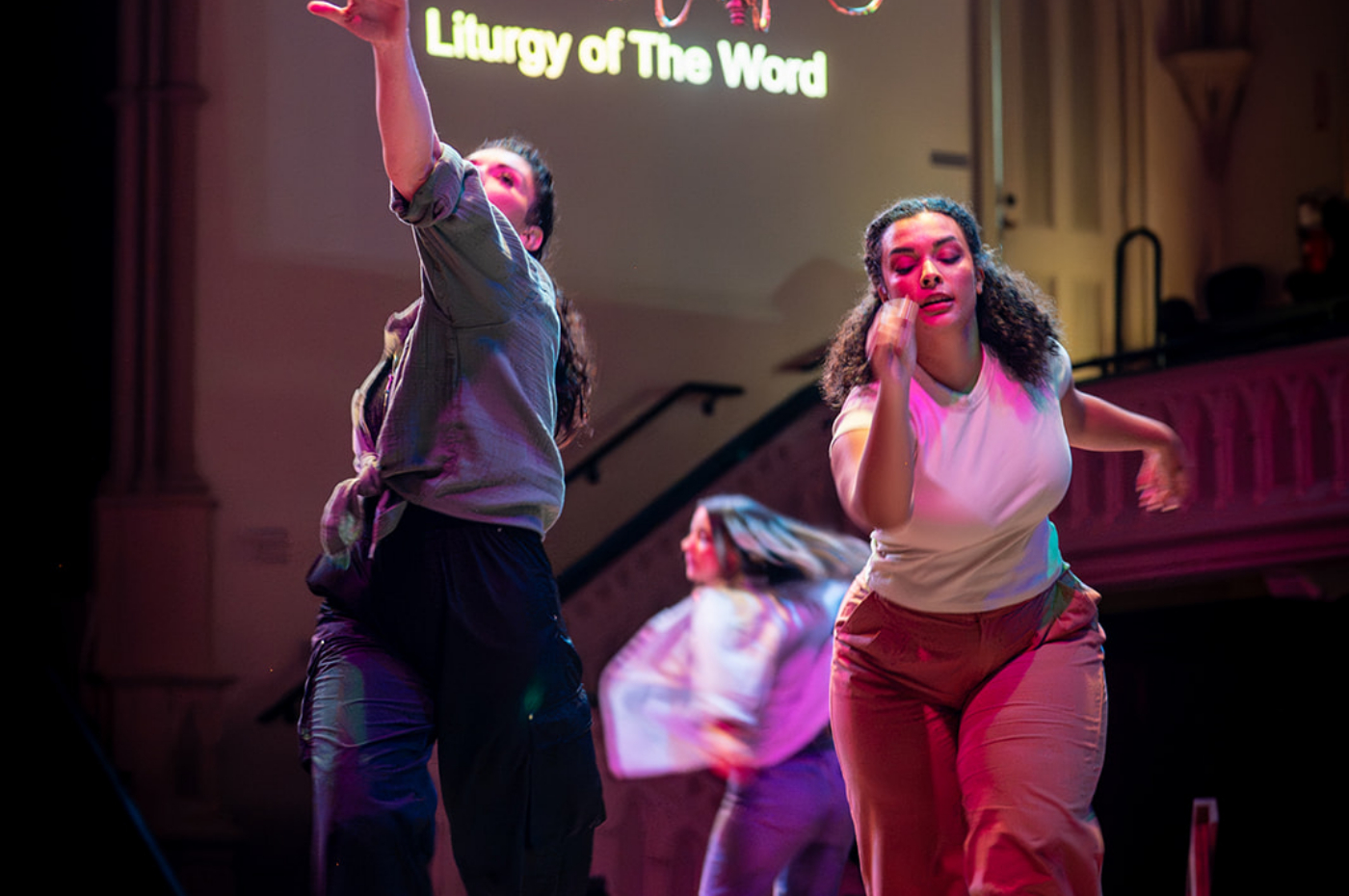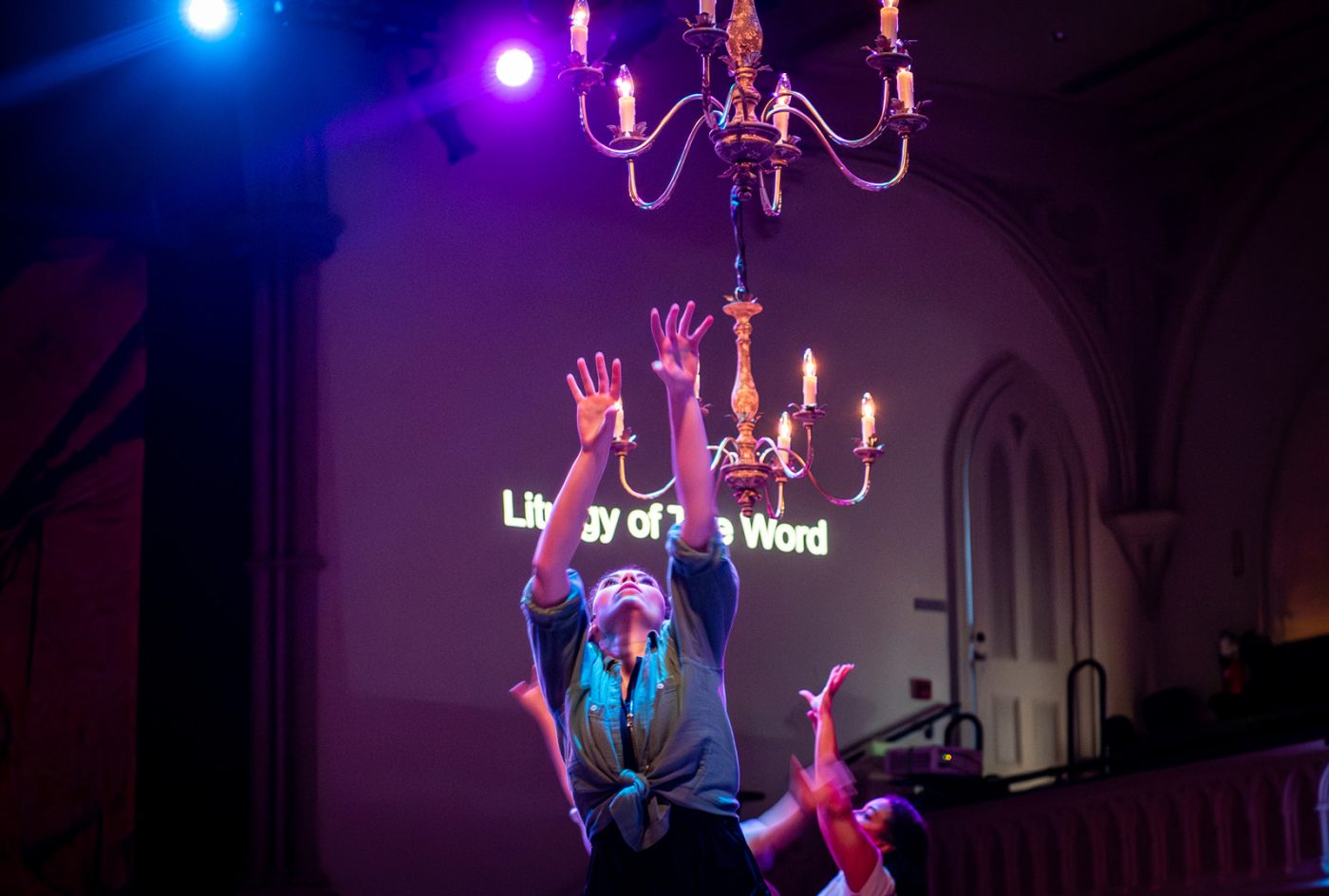In 2024 Irish audiences could see two recent operas by Emma O’Halloran and Mark O’Halloran, Mary Motorhead and Trade, performed as a double bill in a touring production by Irish National Opera. These searing psychological music-dramas attracted rave reviews, confronting viewers with work that was unmistakably new and powerfully vivid. These two pieces are newly available on digital audio release on Signum Records. Emma O’Halloran is now developing a new opera, A Mass for Women in Bathrooms, which had its initial work-in-progress premiere at Opera Saratoga in upstate New York in June 2025.

A vital element of any opera is its libretto (or lyrics) and, intriguingly, the writer of this new work is singer Naomi Louisa O’Connell. She and Emma had already collaborated closely in the development process of Mary Motorhead, which Naomi performed both in the United States and in Ireland. We caught up with them both to find out more about this new opera and how it is developing.
GP: Naomi, we don’t think of you as a writer: have you always been doing this, or did it just come to you as something you had to do?
Naomi: I've been writing all my life, but mostly for myself. I journal, I write program notes for my recitals, I’ve had some pieces of work published, and I've really enjoyed this process of writing a libretto, but that's because of Emma as well—it's just great to have a collaborator who is so open and giving.
GP: I imagine you had quite an exacting reader in Emma…
Emma: It's been really fun to work together, knowing Naomi as a performer and an actor, and to see the level of depth she'll go into in creating a character. I wrote Mary Motorhead for Naomi, and to see what she brought to that let me know how deep a thinker she was. I think we had a shared vision for what we wanted to get across in the piece. And Naomi knows what words sound well in the mouth when you sing, and that's always really helpful as well.

GP: Tell us about A Mass for Women in Bathrooms.
Naomi: Emma and I had a conversation after we had done Mary Motorhead in the States. We were like – gosh! wouldn't it be great to write something together, something that really spoke to our own experience. We started with a story of a mother (Mam) and, initially, two sisters that became three, because we wanted to incorporate music for a vocal trio. The writing that came easiest to me had a particular rhythm with an echo of the liturgy about it, and that led me to the mass structure.
Emma: It's been really fun to play with Naomi's writing, because there are layers to every line. It moves a lot between moments where it can feel very, very real, and then, at other times, maybe it's a memory, a dream-like moment. The structure of the mass in its most stripped-back form is invitation and repetition, and the more I sit with the text it feels like the use of language is a type of incantation. There's a moment when the girls are quite young, it's a sort of coming-of-age, where they're in a bathroom stall and they're sharing a naggin of vodka together before they go out to the nightclub, and they keep repeating, pass it here, pass it here, pass it here. There's this nod to ritual, but there's also a grounding in reality as well.
GP: Can you say anything more about the characters?
Naomi: There are three sisters: Bríd, who's the eldest, Máire the middle child—she's the wild one—and Aoife’s the youngest, quite a bit younger than the other two, so they've almost raised her. Each sister tells a story represented by milk, flesh, and salt. We see them at formative moments in their lives, moments often lived through alone by women in bathrooms: abortion, miscarriage... They're all body/blood moments—we wanted to reclaim those Catholic symbols. There are a lot of references to the sea. The sea can be many things: water, rebirth, baptism, a kind of womb-like space. I love symbolic plays, and I like anything that's open enough to be read on many levels—I love to play it as a performer and to see it on the stage—something that still allows room for the ideas of whoever interprets it.

GP: One of the most poignant issues that you raise is a sense of unanswered questions, or a search for connection, between these figures: how does that emerge through the story?
Emma: I think the portrayal of the character of Mam is particularly nuanced. She is conflicted in different ways, protective, but she's overwhelmed, and she can be nurturing but also, as we find out later in the piece, potentially dangerous. Through her eyes we get to see how mothers navigate between traditional expectations and their own desires.
GP: How was the experience of workshopping this at Saratoga? Did any new ideas emerge from that process?
Emma: For us to hear people play around with these lines allowed us to get to know all of the characters a bit better. Being able to just push the barriers a little bit and explore things was really helpful.
We're doing something that I am not familiar with in many other operas, in that we have spoken text for the character of Mam with sung text for the sisters—so they're in their own worlds. We really wanted to figure out how Mam was going to come to life, and I'm going to write specially-notated material for her. I think it will be challenging for the actor, but the energy it will produce is exactly what is needed for this piece.
Writing for the sisters was easier, but also it was the first time for me to write for trios, and think about how they function both individually and collectively. The interesting thing about siblings is that you can grow up in the same household but have completely different experiences. How do I create this sense of a shared history, a trio of voices that can echo and support and merge with each other, but also establish a separate sound world for each?
Naomi: We had a wonderful director, Annie Saunders, who brought things out of the text and out of the music and out of the performers. It was extremely helpful to watch that, and to watch how the performers dove into it. Their acting approach had to be open enough to be read on many levels. It was fascinating to watch how they grasped that by the end of the process.

GP: Composing this, did you find yourself associating this story with things in your own memory, or any particular sounds that you were drawn to?
Emma: Once I have read through the libretto, I know that certain elements or thematic material will come back. Sometimes they're just abstract images in my head, and I will try and figure out what that will mean musically. Then with the sisters I usually try and walk a mile in their shoes and feel how they're feeling. And I'll go to the piano, let material come out, and then I'll start writing. This was a new challenge for me because we were doing a piano vocal workshop, so I was putting colour aspects to one side and thinking more structurally and harmonically and melodically, and taking notes about how things would be with various timbres and stuff later.
GP: How soon do we get to see this in Ireland?
Naomi: We'd love to do it in Ireland. Our next stage will be to apply for funding for a full orchestral workshop. I think that's really important: you've heard Emma's music, and how it lives on a large, layered scale, which is just incredible. It's already so beautiful, with the piano and the electronics, that the audiences were very, very moved by the end of it.
GP: The very idea of a bathroom itself has become quite a fraught political issue in gender politics in America—was that an issue?
Naomi: Somebody said afterwards how wonderful to have something as mundane as a bathroom become a space in which this catharsis can happen, you know, because you suffer by yourself in a bathroom and we’re opening up that private space. Not in a voyeuristic way but in a way that is like communion.
Emma: You've closed the bathroom door, and no one knows what goes on behind it, and presenting the bathroom as a space of vulnerability and transformation was a conversation starter because people came back. We presented the show twice, and a lot of the audience that attended the first presentation came back and brought friends, and the feedback was that they were excited to use this as a way to share their own experiences. I guess it's hard to talk about these things sometimes, or maybe your society doesn't want you to.
GP: Religion has left a complex legacy in Ireland. How do you address this?
Naomi: I struggle with faith, because the Catholic Church has a dark, dark history. And yet for some people, going to Mass is the moment in their week where they meet the rest of the community. So it's a hard one. We didn't set out to write this as a two fingers to the church. It's really not that at all. We wanted to find out what was sacred to us. That's why we've written it.

Commissioned by Opera Saratoga with funding from the Arts Council and Culture Ireland, A Mass for Women in Bathrooms by Emma O’Halloran and Naomi Louisa O’Connell awaits its Irish premiere.
Details for the Signum Classics 2025 release of Trade / Mary Motorhead (produced by Beth Morrison Projects and Irish National Opera) available here.
Photo credits: banner image of Naomi Louisa O'Connell and Emma O'Halloran by John Kelly; all other images © NUA Photography
